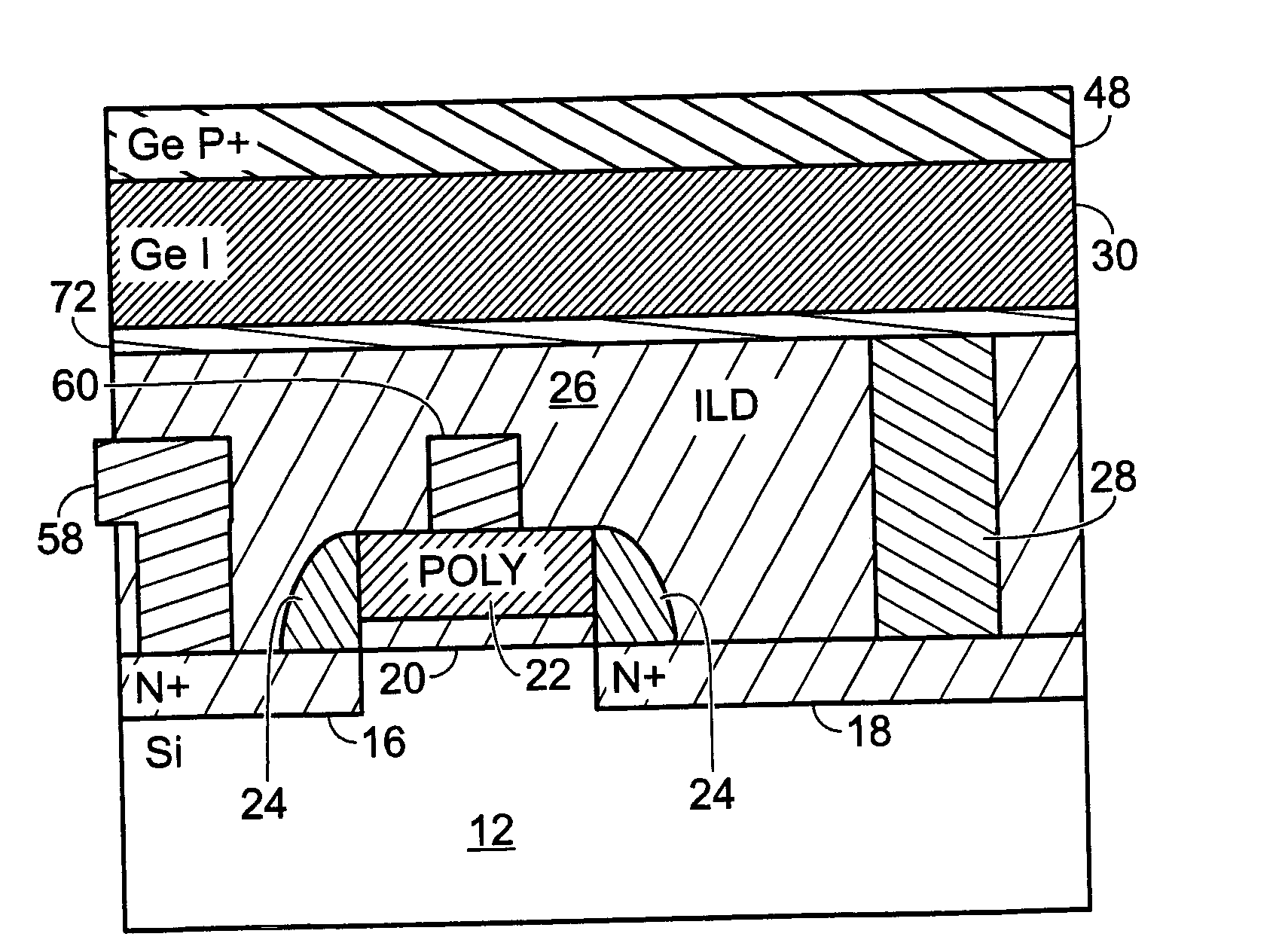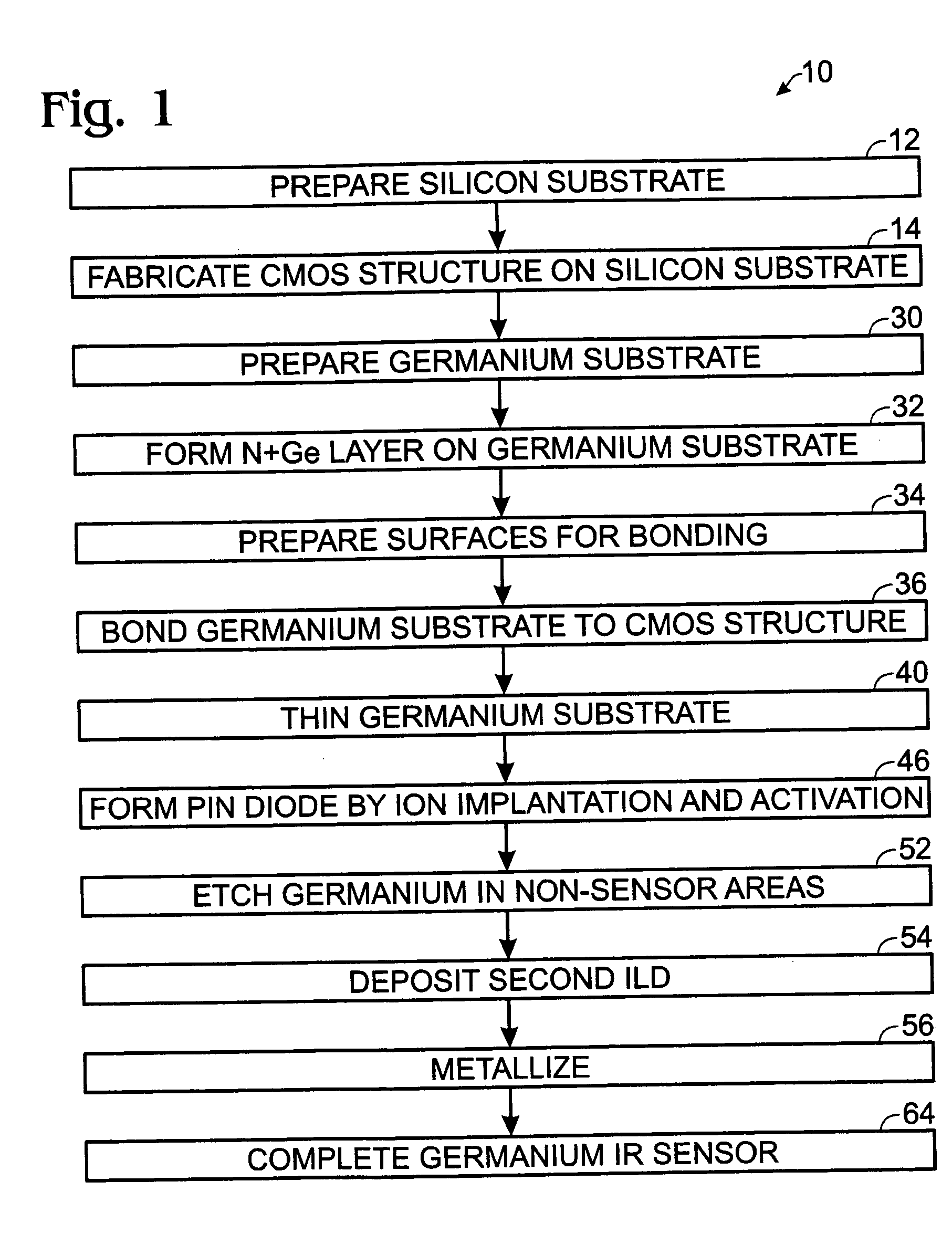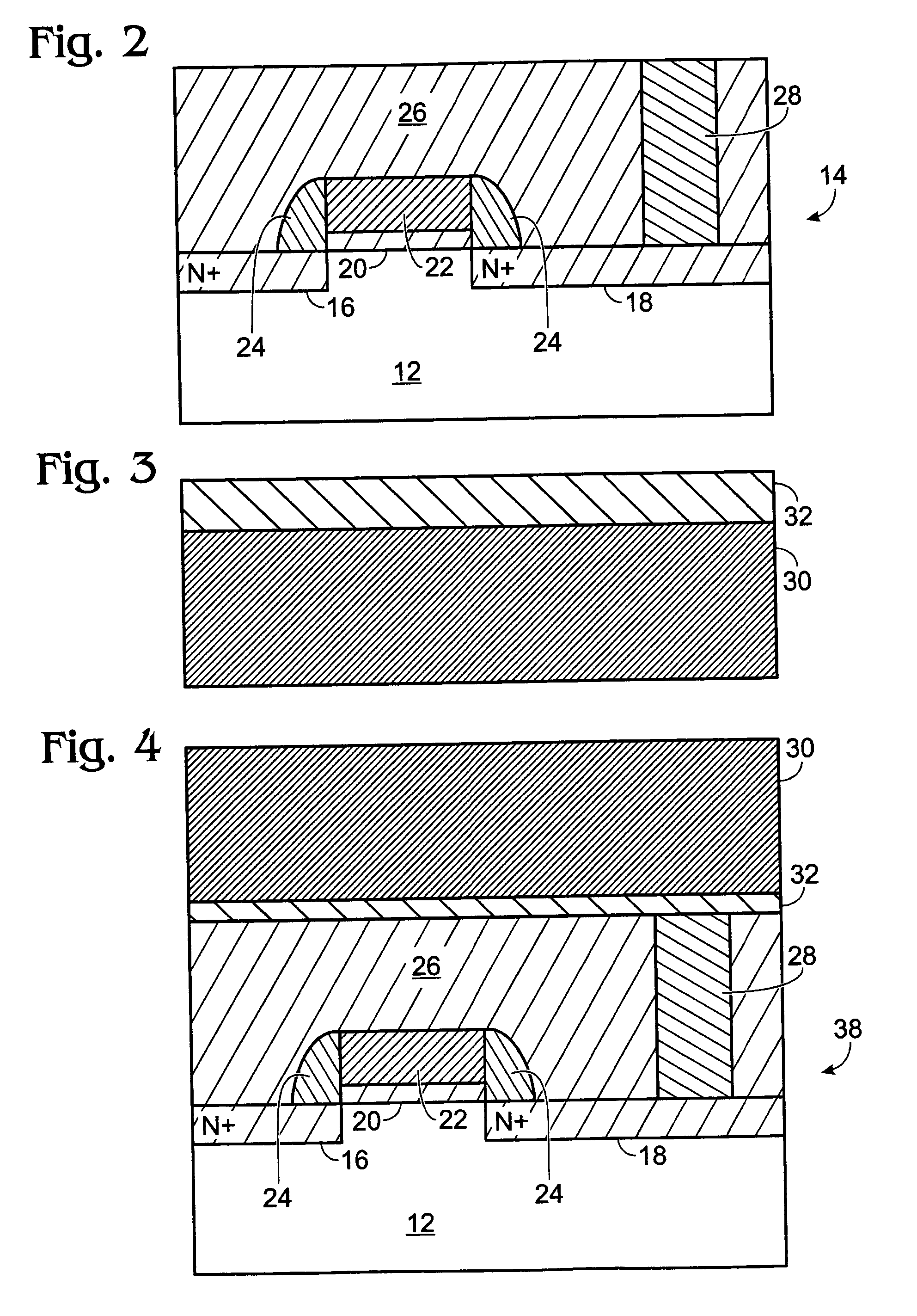Fabrication of thin film germanium infrared sensor by bonding to silicon wafer
a germanium based infrared sensor and thin film technology, applied in the field of photodetectors, can solve the problems of difficult fabrication of ir detectors on sige film, maximum thickness of sige formed, dark curren
- Summary
- Abstract
- Description
- Claims
- Application Information
AI Technical Summary
Benefits of technology
Problems solved by technology
Method used
Image
Examples
Embodiment Construction
[0018] Using the method of the invention, a germanium thin film is directly bonded to a silicon substrate to preserve the quality of the germanium crystal layer. This invention negates the need for high temperature processes after germanium bonding. High temperature process after bonding results in defects in a germanium thin film, e.g., thermal induced slip, bonding voids and crystalline defect. IC drive circuits are used on a silicon wafer, using standard front-end of line processes before the bonding process takes place. After a germanium thin film is bonded to a silicon wafer, the wafer is only required to undergo standard back-end processes of conventional silicon IC processes, wherein the maximum temperature is between about 300° C. to 400° C. The quality of germanium thin films may thus be preserved and a high efficiency, low noise IR detector may be fabricated. The use of the standard silicon CMOS process in fabrication of the drive circuit also simplifies the fabrication.
[...
PUM
| Property | Measurement | Unit |
|---|---|---|
| temperature | aaaaa | aaaaa |
| temperature | aaaaa | aaaaa |
| temperature | aaaaa | aaaaa |
Abstract
Description
Claims
Application Information
 Login to View More
Login to View More - R&D
- Intellectual Property
- Life Sciences
- Materials
- Tech Scout
- Unparalleled Data Quality
- Higher Quality Content
- 60% Fewer Hallucinations
Browse by: Latest US Patents, China's latest patents, Technical Efficacy Thesaurus, Application Domain, Technology Topic, Popular Technical Reports.
© 2025 PatSnap. All rights reserved.Legal|Privacy policy|Modern Slavery Act Transparency Statement|Sitemap|About US| Contact US: help@patsnap.com



